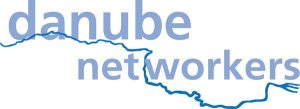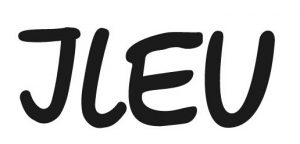Story-Telling Cafés
Main goals:
To enhance the participation of older learners, intercultural and intergenerational dialogue.
To increase the participants’ creativity on the topic of the river Danube and the Danube countries through telling personal stories.
The subtopics related to the topic of the river Danube and the Danube countries were:
- The river as a pathway for people, goods and culture.
- Traditions connected with life along the Danube.
- A bridge between the generations – Danube stories alive.
- Telling life stories.
Stages:
Stage/Step 1: Giving the task of creating a personal story related to the river Danube and the Danube countries and a number of formulated subtopics
Stage/Step 2: Creating of personal stories by the respective authors
Stage/Step 3: Creating presentation materials which are used by the author as educational tools in storytelling
Stage/Step 4: Creating a scenario for an event related to a specific subtopic, which involves storytelling by the authors of personal stories about the Danube River
Stage/Step 5: Participation in the storytelling event
Stage/Step 6: Uploading the storytelling clips on the project website
Outputs:
A book Danube stories with information about all Story-telling cafés organized in the framework of the DASTO project.
An album Danube stories with three of the most exciting stories of every project partner.
A scientific publication about DASTO.
A project website in English and German languages.
A University website in Bulgarian.
Many reports and presentations, developed by the project manager.
Organizing or participating in the activities related to the topics:
1) The River as a Pathway for People, Goods and Culture:
- Captains’ Real Stories Meeting (interviews and real stories, told by captains, who have sailed on the river Danube);
- Storytelling in the meeting on the topic Informing the Society about the Problems of Adults and Lobbying with the local authorities;
- Storytelling in the Festival of Mushrooms.
2) Traditions Connected with Life along the river Danube:
- Celebrating the Grandmother’s Day (Day of the Midwife);
- Fair of the Hartsoi (Bulgarian ethnic group).
3) A Bridge between the Generations – Danube Stories Alive:
- Storytelling in the discussion ”Let us Live Better”;
- Personal stories of high schools and university students (presentations: Danube Stories – real stories, folk tales and fairy-tales).
4) Telling Life Stories:
- Photo Contest ”The Garden in my House”;
- Exhibition “The Danube – the River of Europe”.
Participating with oral personal stories in the European Conference “Active Ageing and Intergenerational Dialogue – a Challenge for the Danube Countries in a Common Europe – New Directions in Seniors’ Education”.
Using educational tools: presentations of school and university students, photos, pictures, interviews, posters, dances, songs, persons, films, clips.
Results:
Increased the participants’ creativity through telling personal stories on the topic of the river Danube and the Danube countries before an appropriate audience related to their living environment, history and cultural identity.
Developed their European consciousness.
Created a network of older people from the Danube countries and fostered their European spirit.
Target group: older people, university and school students, scientists, researchers, multiplicators
Age group: 15+
Gender: mixed
Pedagogical Information
The Story-telling cafés method is preceded by a lecture and individual practical training in writing stories. The Story-telling cafés educational method differs from Word cafés in several ways:- The story telling venue is not only a café but also an exhibition or concert hall, a university lecture hall, a classroom in a school, etc.
- The personal stories are told not only as a separate event. They are often incorporated into the scenario of a larger event thus reaching and impacting a larger cohort of people of various ages.
- The personal stories are related to the topic of the river Danube and the Danube countries.
- The storytelling is supported by a presentation, photos, pictures, an interview, a clip, a film, a poster, music, a dance, etc.
- The stories have to be told and written by the author.
European Dimension
The method increased the participants’ creativity through telling personal stories on the topic of the Danube and Danube countries before an appropriate audience related to their living environment, history and cultural identity. It helped develop their European consciousness. It also contributed to creating a network of older people from the Danube countries and fostered their European spirit. The European topics included in the method are: Diversity, Peace, Solidarity, Heritage, Social inclusion.Applied in projects
Danube Stories
The project focuses on educating elderly learners about current economic issues. Danube Stories brings together organizations from different countries and different spheres of activity to work together and exchange best practices in areas such as adult social inclusion and the acquisition of new cultural and / or linguistic skills through formal and informal methods of education and training.



